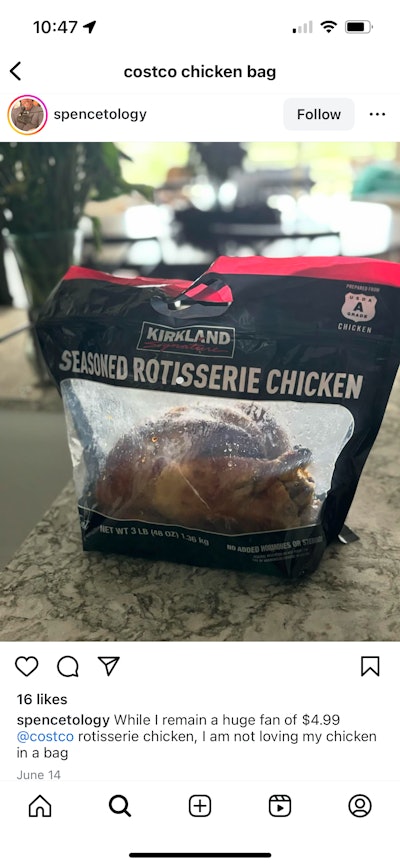
It seems like there are a lot of people who are raising a fuss over the packaging that contains the Kirkland Signature Seasoned Rotisserie Chicken sold at Costco.
When I first heard about this, it made me think of something Cecil, a wise old farmer who lived about a mile and a half down the road once told a younger version of myself: “If you’re going to (grumble), (grumble) about something that matters.”
That was the first time I heard Cecil, who was also a pillar in our church, use language that could be considered off-color, so that advise stuck with me. I may not always heed it, as some readers of my blog might think, but I try.
The change in packaging
Obviously, Costco sells a lot of rotisserie chicken. It is one of the things the chain store is known for. In fact, Nebraska-based Lincoln Premium Poultry exists simply because of demand for this product.
I’ll admit, I have never had a Costco membership, and can only remember going into a store with a member on one occasion. Because of that, I’ve never brought one of those rotisserie chickens home to eat.
But I learned that Costco chicken used to come in hard plastic, “clamshell” containers and now they come in a plastic bag with a zip-style top to keep it enclosed.
However, we just bought one at another grocer this weekend and I’ll probably finish off the rest of it today at lunch. It came in that same style of bag. We’ve purchased rotisserie chicken from several stores, all of which sold them in the similar style of bag, which Costco now does. So, for me, I didn’t know any differently.
One complaint that I noticed was that the new bags are not recyclable, like the old containers were. That seemed like a legitimate thing to be concerned about, as we need to be recycling all we can and keep environmental stewardship in mind. However, Costco, according to a Fox Business report, stated in its Costco Connection magazine that there was a sustainability motive for the switch.
“Based on projected rotisserie chicken sales in 2024 in the U.S., the new packaging will save an estimated 17 million pounds of plastic every year,” Costco stated.
“The bag also takes less space to transport; one pallet of the new bags is equivalent to five pallets of the old packaging, so Costco can remove 1,000 of its freight trucks from the road each year. The use of fewer transportation vehicles will eliminate over 4,000 metric tons of carbon dioxide annually.”
To me, that sounds great, but if it does beg the question: Will the trade-off result in a more or less environmentally-friendly outcome? That could be hard to measure, considering there’s no real way to know how many people were recycling the old containers before the change.
Another common complaint is that the bags are leaky. Personally, I’ve never had a bagged chicken from another store leak. But there’s no guarantee the old containers might not leak, should the lid pop off or a crack form in the plastic while it's being transported home.
Does it matter?
Is this much ado about nothing? Not necessarily. Maybe it does matter.
Costco made a decision it apparently thought was a more sustainable solution. So, credit needs to be given to them for making an effort. While this might be an unexpected outcome, it has got more people thinking. And maybe all the hubbub could even lead to an effort to find a packaging product that is more sustainable than both options Costco has tried.
If that is the case, I'd suspect Cecil, may he rest in peace, would think the complaints have merit.


















